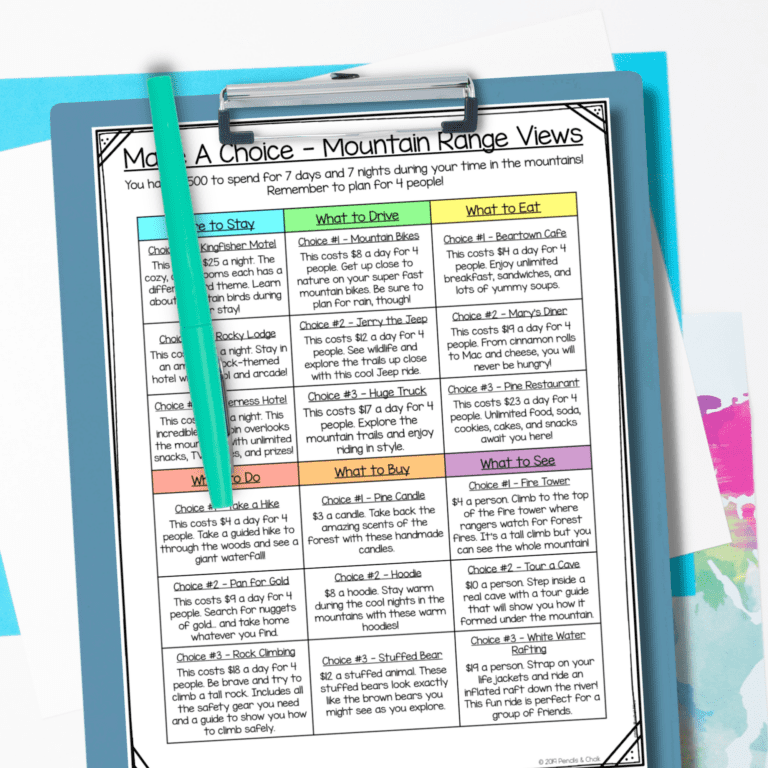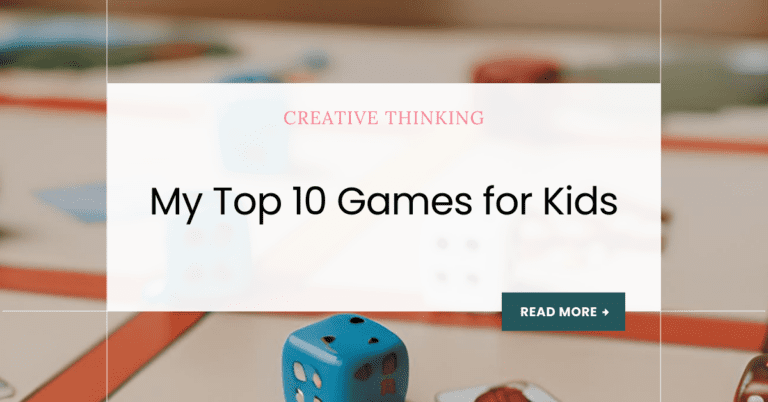Creativity is a hallmark of childhood! Helping to nurture creativity in children is one of the greatest joys that parents & educators experience.
Giving children space to use their creativity empowers them to think outside the box, express themselves in unique ways, and tackle multiple challenges.
Fostering creativity in children is a team effort between parents, teachers, and other caregivers.
There is no “wrong” or “right” way to do this, either! Simply focusing on letting children be creative, doing things their own way, and letting them explore will boost their creative skills.
While it might feel daunting, encouraging children to use their creative powers is fun, easy, and less intimidating than you might think!
Table of Contents
PLAY-BASED IDEAS TO NURTURE CREATIVITY
- Encourage unstructured play: Let children explore and create without rigid rules or schedules, allowing their imaginations to run wild.
- Provide open-ended toys: Toys like building blocks, art supplies, and craft materials promote creative thinking and problem-solving. We LOVE magnet blocks in our house.
- Practice active listening: Pay attention to their creative ideas and provide constructive feedback…. it helps them feel valued!
- Utilize social stories: this fun tool helps to practice creative ways to solve interpersonal problems.
ART & MUSIC IDEAS
- Offer diverse art materials: From paints and clay to markers and fabric, provide a wide range of mediums for artistic expression.
- Embrace messiness: Don’t shy away from messy play; it encourages freedom of expression and experimentation! Head here to find homemade playdough recipes!
- Create an art corner: Designate a space in your home for arts and crafts, making creativity easily accessible. I love using our school room for this purpose!
- Foster a creative environment: Surround children with inspiring books, art, and music to stimulate their imaginations.
- Incorporate music: Music sparks creativity and can be an excellent outlet for emotions.
- Share artistic influences: Introduce children to famous artists, writers, and musicians to inspire their work.
One fantastic way to boost creativity is by working through puzzles! Grab this FREE set of mazes and boost problem-solving & creativity!

EMOTIONAL SKILLS IDEAS
- Celebrate mistakes: Teach children that mistakes are part of the creative process and valuable opportunities for learning.
- Value curiosity: Encourage questions and explore answers together to nurture a lifelong love for learning.
- Allow daydreaming: Let children wander in their thoughts as it is an essential part of creative thinking.
- Celebrate accomplishments: Praise their creativity and effort to build confidence and a positive attitude towards their work.
- Practice mindfulness: Teach children to be present in their creative endeavors, enhancing their focus and imagination.
- Focus on process over product: Emphasize the joy of creating, rather than the end result.
- Support individual interests: Nurture the passions and interests of each child, as it fuels their creativity.
- Foster an accepting environment: Emphasize that all ideas and forms of expression are valued and respected.
- Teach empathy: Developing empathy can inspire creative solutions to societal problems.
- Encourage perseverance: Instill the value of perseverance, as creativity often requires patience and dedication.
NURTURE CREATIVITY IN SOCIAL SITUATIONS
- Collaborative projects: Engage kids in group activities, where they learn to share ideas and work together creatively.
- Host creative playdates: Arrange playdates centered around arts, crafts, or storytelling.
LANGUAGE ARTS IDEAS
- Storytelling sessions: Share stories with imaginative elements and encourage children to create their own tales.
- Offer free writing time: Allow children to write without constraints, letting their imagination flow.
- Introduce role-play: Encourage imaginative play and pretend games to develop storytelling skills.
- Support imaginative dress-up: Provide costumes and props, allowing children to become characters from their favorite stories.
- Incorporate storytelling in daily life: Create imaginative stories during car rides or bedtime to spark their creativity.
- Create a gratitude journal: Daily reflections on what inspires gratitude can lead to new creative insights.
- Embrace “What if” questions: Encourage children to explore hypothetical scenarios to stretch their imaginations.
COMMUNITY RESOURCES
- Attend creative workshops: Enroll kids in workshops and classes to learn new creative skills and techniques.
- Mindful observation: Engage in nature walks or museum visits, encouraging kids to observe and appreciate their surroundings.
- Introduce multiculturalism: Expose children to diverse cultures and traditions, broadening their perspectives.
STEM IDEAS
- Use technology creatively: Encourage children to explore creative apps and tools for digital art and storytelling.
- Set up a science corner: Promote exploration through age-appropriate science experiments and hands-on learning.
- Encourage creative problem-solving: Present children with challenges and encourage them to find unique solutions.
- Encourage recycling and upcycling: Teach kids how to turn trash into treasure through creative reuse.
- Encourage risk-taking: Support children in trying new things and taking creative risks without fear of failure.
- Offer choice-based activities: Allow kids to select their creative projects, fostering autonomy and intrinsic motivation.
FAMILY TIME IDEAS
- Build a “creativity toolkit”: Gather materials and resources for spontaneous creativity.
- Establish a routine for creativity: Designate a specific creative time each day or week to make it a regular habit.
- Share creative hobbies: Involve children in your creative hobbies, such as cooking, gardening, or woodworking.
- Host family talent shows: Celebrate creativity together by showcasing everyone’s talents.
- Play games: games help foster creativity and problem-solving skills.
- Be a creative role model: Demonstrate your own creative pursuits and inspire them through your passion.
MISCELLANEOUS IDEAS TO NURTURE CREATIVITY
- Limit screen time: Set boundaries on screen time to encourage children to explore other avenues of creativity.
- Or, for an added challenge, schedule tech-free time: Unplugging from screens fosters imagination and creativity.
- Display their work: Showcase their creative masterpieces proudly, boosting their self-esteem.
- Encourage outdoor play: Nature is an abundant source of inspiration; outdoor play stimulates creativity.
- Organize creative challenges: Set up fun challenges or contests that prompt children to think creatively.
- Create a “creativity jar”: Fill it with writing prompts, drawing ideas, or craft suggestions for those moments when inspiration is needed.
Working to nurture creativity in children is an incredible privilege. Let’s let children grow up slowly, embracing the innocence and wonder they naturally possess.
Creativity is often an overlooked skill, but is absolutely essential for children to grow and develop!
Helping children embrace the wonders of their imagination is incredibly rewarding. We can kindle the creative spark in the young minds of today, shaping a future generation that loves to solve problems and bring their unique creative visions to life.
Free Resources for Parents & Teachers
If you want to help your students or child practice their creative problem-solving skills, enter your information below and I will send you a FREE project-based learning activity!




